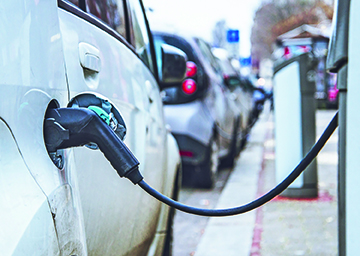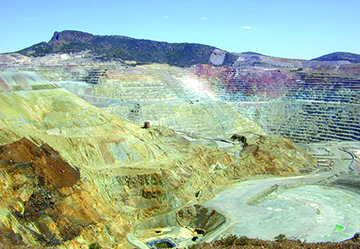“Politicians wanted to mine the Grand Canyon for zinc and copper, and Theodore Roosevelt said, ‘No.’” – Douglas Brinkley
For the last century, the internal combustion engine has been the driving force behind the industrialized world. But, just as landlines were (mostly) replaced by cell phones, the use of fossil fuels to transport people is being systematically eclipsed by electric vehicles (EVs).
Currently, most major auto manufacturers are offering an EV model, and nearly all have announced a plan to become carbon neutral within the next two-to-three decades. The EV revolution has introduced a new type of propulsion technology into the mainstream — the lithium ion battery. Additionally, the EV marketplace is abundant — practically saturated — with dozens of startup companies looking to carve out a niche in this booming industry.
Copper is the lynchpin of the EV revolution, as it is uniquely ideal for wiring electric vehicles due to its conductivity and compatibility with high temperatures. Aluminum is the closest alternative, but in terms of cost and efficiency — it doesn’t even come close.
Meet The New Boss
The role of copper wire is in EVs somewhat comparable to how a fuel line feeds an internal combustion engine (ICE). The wiring network carries an electric charge from the lithium ion batteries to the vehicle’s electric traction motor. Additionally, copper wire feeds power to the rest of the vehicle’s electric infrastructure and motorized functions such as windows, lights, thermal system, etc. This results in the use of a substantial amount of copper per EV — in the batteries, the charging port, busbars, motors, rotors, and much more. According to copper alliance.org, the average EV contains 83 kg of copper — compared to the average 23 kg found in most ICEs. Thus, large-scale adoption of EVs has placed a premium on the value of copper worldwide.
A recent report published by copper.org estimates that the known copper resources across the globe are somewhere around 5.8 trillion pounds. Currently, only about 12% of this ore has been mined, processed and put into circulation — most of which is still being utilized in some capacity today. While it is true that copper has been dubbed “the world’s most reusable resource,” as demand increases, so too will the need to extract more copper from subterranean deposits.
A Worldwide Resource

The Environmental Protection Agency can insist that vehicular transportation does not encounter copper potholes.
In terms of global consumption, copper is the third most popular metal next to aluminum and steel. It is pervasive in trace amounts in every ecosystem, partially due to human activity. According to a recent report by The Dartmouth Toxic Metals Superfund Research Program, the largest deposits of copper are in the Chilean Andes, Utah, New Mexico, and the upper peninsula of Michigan, with smaller claims being mined in places such as China, Poland, Canada, Zambia, the former Soviet Union, and more. Dartmouth’s research revealed that mining copper, especially using the sulfide-ore method, can be highly toxic to the environments in proximity to mines, smelters, refineries, and other production facilities — reducing air quality while polluting lakes, streams, forests, and farmlands. High levels of copper toxicity can adversely affect the human respiratory system and gastrointestinal tract as well as the circulatory, liver, and endocrine systems. Further, high levels of toxicity from copper sulfate have been known to cause psychological distress and death from nervous disorders and kidney failure.
Support Sustainability
What this all boils down to is that, in an attempt to reduce pollution from burning fossil fuels, mining copper to power the cars which are supposed to deliver humanity from poisoning the earth could instead put civilization back in the slow lane. Thus, it is the onus of future consumers of EV transportation to insist that the companies who earn their business also provide transparency concerning their acquisition of the raw copper that makes EV mobility possible.
Otherwise, this 21st Century attempt at “progress” and “sustainable energy” may be nothing more than another spin on the ages old “two steps forward, one step back,” “robbing Peter to pay Paul” merry-go-round. Extracting copper from relatively accessible deposits in a responsible, regulated manner could result in less pollution, but the key to progress is to insist that car manufacturers establish a market protocol for recycling old EV batteries for the production of new ones. This standard can be further reinforced if regulatory agencies such as the EPA and the National Highway Traffic Safety Administration are pressured to establish eco-friendly regulations on copper acquisitions — primarily through recycling.
Thankfully, as “the world’s most reusable resource,” copper can be recycled fairly easily and put back into production as soon as the vehicles it helps power become inoperable. The difference between reusing copper from old batteries and purchasing newly-extracted copper is a slim margin on the profit ledger. While opting for the latter over the former will save a few pennies along the way, cutting that corner — as far as the environment is concerned — is hardly worth it.



